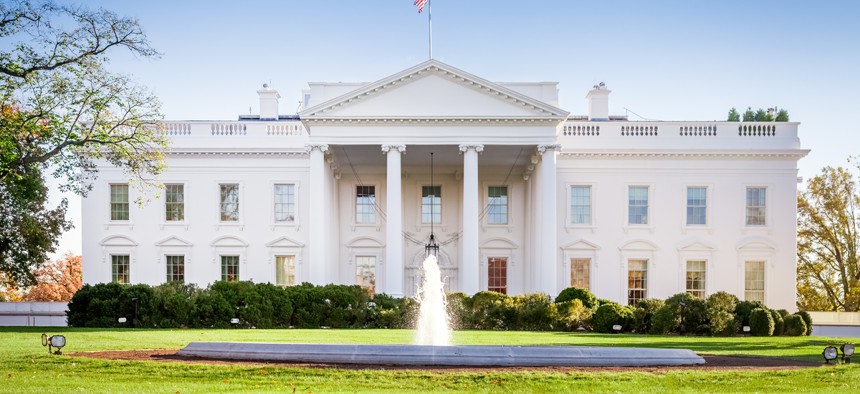OMB Adds Customer Experience, Data Policy Updates to Annual Budget Guidance

turtix/Shutterstock
The Office of Management and Budget released an update to Circular A-11, outlining how agencies should be thinking about their fiscal 2021 budget requests.
As Congress debates appropriations for fiscal 2020, federal agencies are set to start preparing budget requests for fiscal 2021 and have new guidance from the Office of Management and Budget with regard to how they report IT spending and request new funding.
The update to Circular A-11 released Friday includes both technical and substantive changes throughout, including updates and additions to section 55, which covers information technology investments, and section 51, which sets the basic requirements for justifying budget requests, including IT investments.
Deep in the document, OMB added to a newer section—section 280, which was added to the guidance last year—on managing customer experience and improving service delivery.
“This section provides continued guidance to agencies on implementing the federal government’s customer experience framework, and information for agencies on how to effectively manage customer experience improvement efforts,” the document states. “Updates include additional information for agencies on best practices for measuring and managing customer experience.”
The section requires an annual review of how programs with citizen-facing services are ensuring they meet the core functions of the “CX program maturity model,” namely: measurement, governance and strategy, culture and organization, customer understanding, and service design. The self-assessment should include details on how the agency—and specific programs—are meeting these metrics and an action plan to remedy any deficiencies.
The document outlines specific metrics to be used for measuring customer experience and various aspects that should be accounted for, including service, process and people.
The guidance also offers best practices for garnering user feedback, such as how citizens should be polled on their experiences and how that data should be categorized, stored and shared.
Agencies and programs with the most citizen-facing services—dubbed high-impact service providers, or HISPs—have additional reporting requirements, including quarterly data submissions to OMB. HISP program managers also have to include more information in their annual action plans, including:
- Organization/Accountability: Describing how the HISP’s CX resources are organized, the leadership responsible for CX, and what measures are in place to ensure program accountability for CX performance improvement and service delivery.
- CX Program Maturity: Providing the results of an annual self-assessment of the CX program maturity using the maturity model noted above and describing initiatives underway or planned to improve CX program maturity.
- CX Data Collection and Metrics: Describing the types of data collected to support CX assessment, the methods for obtaining feedback, and the methods used to report the data internally and publicly.
- CX Delivery Improvement: Describing the initiatives underway or planned to improve the program’s service delivery.
The self-assessments are due to OMB by Jan. 31. Action plans are due by March 31.
Another significant update is the inclusion of the Technology Business Management, or TBM, accounting schema as part of the budget request process. TBM—a framework for tying IT investments to specific outcomes to provide a more proactive view of how funding is used—was required under the President’s Management Agenda released in 2018 and now codified as part of the budgeting process.
Specifically, the update calls for agencies to include “more granular IT cost reporting” by categorizing requests into IT Cost Pools and IT Towers under the TBM framework. OMB expects agencies to include these denominations in their requests, even if the agency has yet to fully implement TBM as part of their own reporting and accounting processes.
“Over time, OMB will work with agencies to determine how to automate authoritative data collection” to fit within this schema, the document states.
Along with the cost pools and towers, agencies will also be required to submit information on development, modernization and enhancement, or DME, and operations and maintenance, or O&M, spending for each investment.
The revisions also call out recent updates to administration policy, such as the Data Center Optimization Initiative, which requires agencies to submit a justification to OMB before opening any new government-owned facilities. An update to section 51 of the circular “requires all agencies to explain solicitations for new or modernized technologies or services that deviate” from the latest policy.
The document also cites the newly enacted Evidence-Based Policymaking Act, which requires agencies to make better use of data for decision-making and to hire chief data officers. An addition to section 51 requires agencies to report on progress meeting the new law. Another update, in section 55, requires agencies to file an open data plan that outlines how these efforts align with and support their missions.
Michael Hettinger, founder of the Hettinger Strategy Group and former Hill staffer with a focus on technology policy, pointed to this addition as one of the most significant.
“This new statutory requirement, coupled with the issuance of the Federal Data Strategy, will drive changes to the way the government makes investment and budget decisions,” he told Nextgov. “I’ll be interested to see how these requirements play out in practice.”
Along with those internal additions, the update adds a new section that explains the intent of the law and the three new data-focused positions it requires agencies to hire.
Agencies will have to file three additional reports as part of the law: an evidence-building plan, annual evaluation plan and a capacity assessment. The circular includes detailed breakdowns of what should be in each plan and submission deadlines.
Editor's Note: The headline and story have been updated to correct the timeline for the addition of section 280.






